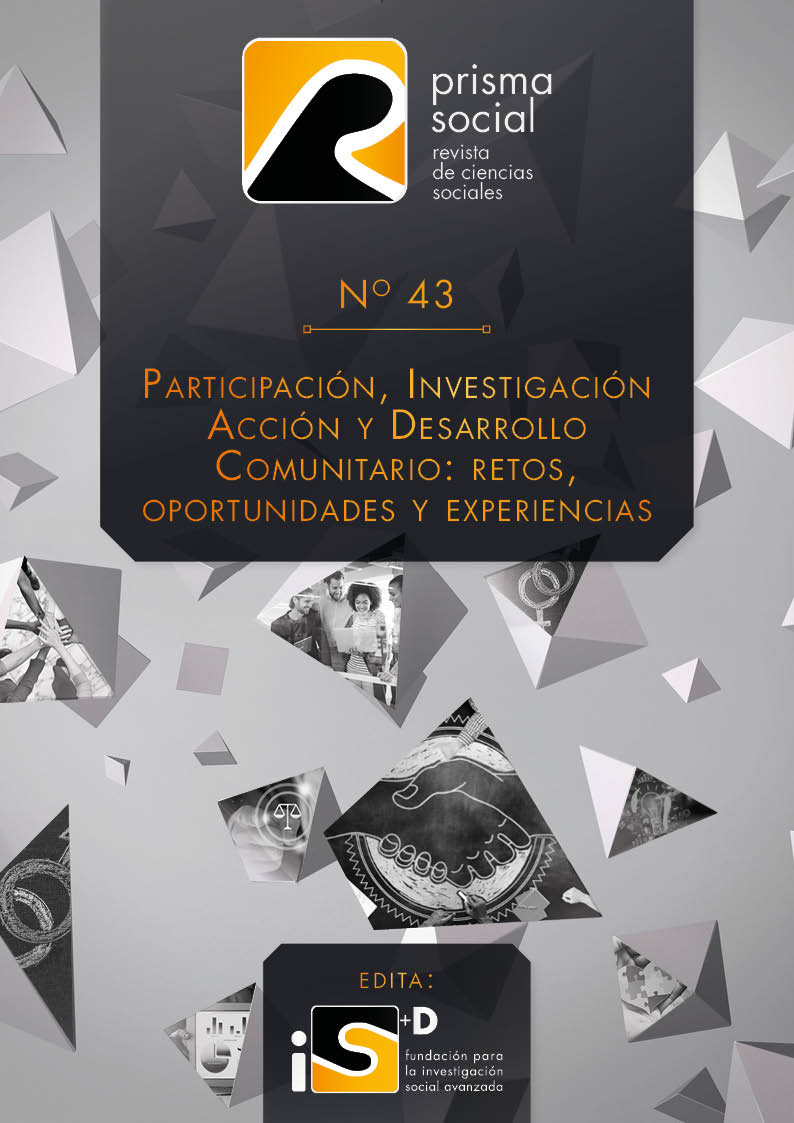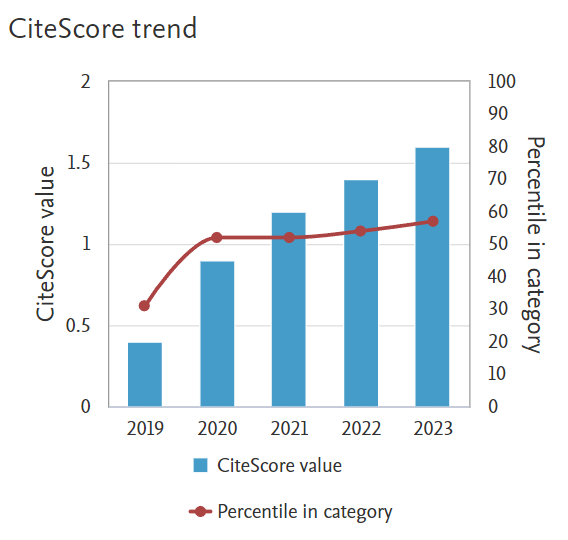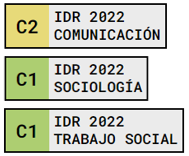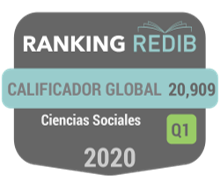Reflections on gender and participation from community art processes in Valencia
Keywords:
citizen participation, local governance, community art, women, intersectionality.Abstract
This research stems from the current context where bureaucratised and commodified participation processes are on the rise, and from the demand of two groups in the city of Valencia, Cabanyal Horta and the Assemblea Feminista, to generate accessible processes of community participation. In this sense, there is a commitment to the creation of alternative narratives that favour the creation of futures through artistic mechanisms of citizen participation.
On the other hand, participation cannot be analysed as a fact isolated from the structures of power, which is why, from an intersectional feminist perspective, the analysis of the participatory experience of women in these artistic experiences is approached: in a mixed and non-organised group and in a non-mixed and organised group.
In this way, Feminist Action Research is used as the predominant methodology together with qualitative techniques. Some of the main results show, on the one hand, the potential of artistic interventions and their accessibility to a large part of the population. On the other hand, they point out some structural and contextual obstacles that prevent the full participation of all women.
Downloads
References
Alberdi, J. (2014). Aspectos sociopolíticos del Desarrollo Humano Local: Nuevas claves de análisis para la participación democrática y las interacciones público-privadas. Instituto Hegoa.
Alguacil, J. (2005). Los desafi?os del nuevo poder local: la participacio?n como estrategia relacional en el gobierno local. Polis, Revista Acade?mica de la Universidad Bolivariana, no 12, pp. 1-15.
Bang, C., & Wajnerman, C. (2010, abril). Arte y transformación social. La importancia de la creación colectiva en intervenciones comunitarias. Revista Argentina de Psicologia (RAP), 48, 89-103. t.ly/K_wx
Bisht, P. (2017). Decolonizing Futures: Exploring Storytelling as a Tool for Inclusion in Foresight. December. http://openresearch.ocadu.ca/id/eprint/2129
Blanco Aristín, P., Carrillo Castillo, J., Claramonte Arrufat, J., & Expósito Prieto, M. (2001). Modos de hacer. Arte crítico, esfera pública y acción directa. Ediciones Universidad de Salamanca.
Borja Sebastià, J., & Muxí Martínez, Z. (2002). El espacio público: ciudad y ciudadanía. Electa España. t.ly/zm9f
Bustos, R., Garci?a, J. & Chueca, D. (2018). Gui?a pra?ctica para facilitar la participacio?n ciudadana. Una seleccio?n de herramientas presenciales y digitales para el trabajo colectivo. Departamento de Relaciones Ciudadanas e Institucionales. Gobierno de Navarra
Crenshaw, K. (1991). Maping the margins: Intersectionality, Identity Politics, and Violence against Women of Color. Stanford Law Review 43 (6), p. 1241-1299.
Escobar, A. (2017). Autonomía y diseño. La realización de lo comunal (Tinta Limón).
Ganuza Fernández, E., Olivari, L., Paño, P., Buitrago, L., & Lorenzana, Concepción. (2010). La democracia en acción. Una visión desde las metodologías participativas. Antígona, procesos participativos.
Ganuza Ferna?ndez , E., & Ferna?ndez-Garci?a, M. (2012). El giro participativo de la administración desafíos en la globalización de los presupuestos participativos. Cuadernos de Trabajo Social, Vol 25, No 2, 333-343
Haraway, Donna (1995). Ciencia, cyborgs y mujeres. Ediciones Cátedra.
Larriaga, A., & Amurrio, M. (2013). Género y estructura de oportunidad participativa local: el caso de Bilbao, España. Revista Mexicana de Sociología, 75(2), 201-223. doi.org/10.22201/iis.01882503p.2013.2.36875
Lincoln, Y. S., & Guba, E. G. (2000). Paradigmatic controversies, contradictions, and emerging confluences. In N. K. Denzin, & Y. S. Lincoln (Eds.), The handbook of qualitative research (2nd ed., pp. 1065-1122), Thousand Oaks, CA: Sage Publications.
Maicas-Pérez, M. (2023) Cap a organitzacions habitables. Anàlisi de processos de canvi organitzacional feminista en organitzacions d'Economia Solidària [Tesis doctoral]. Universitat Politècnica de València
Martínez-Palacios, J. (2015). Le importa el sexo a la democracia participativa. Revista De Estudios Politicos, 168, 151-174. dialnet.unirioja.es/articulo/5683187.pdf
Martínez-Palacios, J., et al. (2016). Innovaciones democráticas feministas. Dykinson.
Martínez-Palacios, J. (2021). El giro participativo neoliberal. Institucionalización de la participación ciudadana en España (1978–2017). Editorial de la Universidad del País Vasco.
Mansbridge, J. (1990). Self-Interest in Political Life. Political Theory, 18(1), 132–153. https://doi.org/10.1177/0090591790018001007
Mohan, G., & Stokke, K. (2000). Participatory development and em- powerment: the dangers of localism. Third Word Quarterly, vol. 21, no2, pp. 247-268.
Palacios Garrido, A. (2009). El arte comunitario: origen y evolución de las prácticas artísticas colaborativas. Arteterapia. Papeles de arteterapia y educación artística para la inclusión social, 4, 197-211.
Ramírez Blanco, J. (2015). Utopías artísticas del mundo contemporáneo, 1989-2012: Arte, movimientos sociales y utopía en Europa Occidental. Universidad Complutense de Madrid.
White, S. C. (2001). Despolitizando el desarrollo: los usos y abusos de la participacio?n. En INTERMO?N/OXFAM, Desarrollo, Organizaciones No Gubernamentales y Sociedad Civil, pp. 158-172.
Downloads
Published
How to Cite
Issue
Section
License
Copyright (c) 2023 Revista Prisma Social

This work is licensed under a Creative Commons Attribution-NonCommercial-NoDerivatives 4.0 International License.
Those authors who publish in this journal accept the following terms:
-
Authors retain copyright.
-
Authors transfer to the journal the right of first publication. The journal also owns the publishing rights.
-
All published contents are governed by an Attribution-NoDerivatives 4.0 International License.
Access the informative version and legal text of the license. By virtue of this, third parties are allowed to use what is published as long as they mention the authorship of the work and the first publication in this journal. If you transform the material, you may not distribute the modified work. -
Authors may make other independent and additional contractual arrangements for non-exclusive distribution of the version of the article published in this journal (e.g., inclusion in an institutional repository or publication in a book) as long as they clearly indicate that the work was first published in this journal.
- Authors are allowed and recommended to publish their work on the Internet (for example on institutional and personal websites), following the publication of, and referencing the journal, as this could lead to constructive exchanges and a more extensive and quick circulation of published works (see The Effect of Open Access).


















